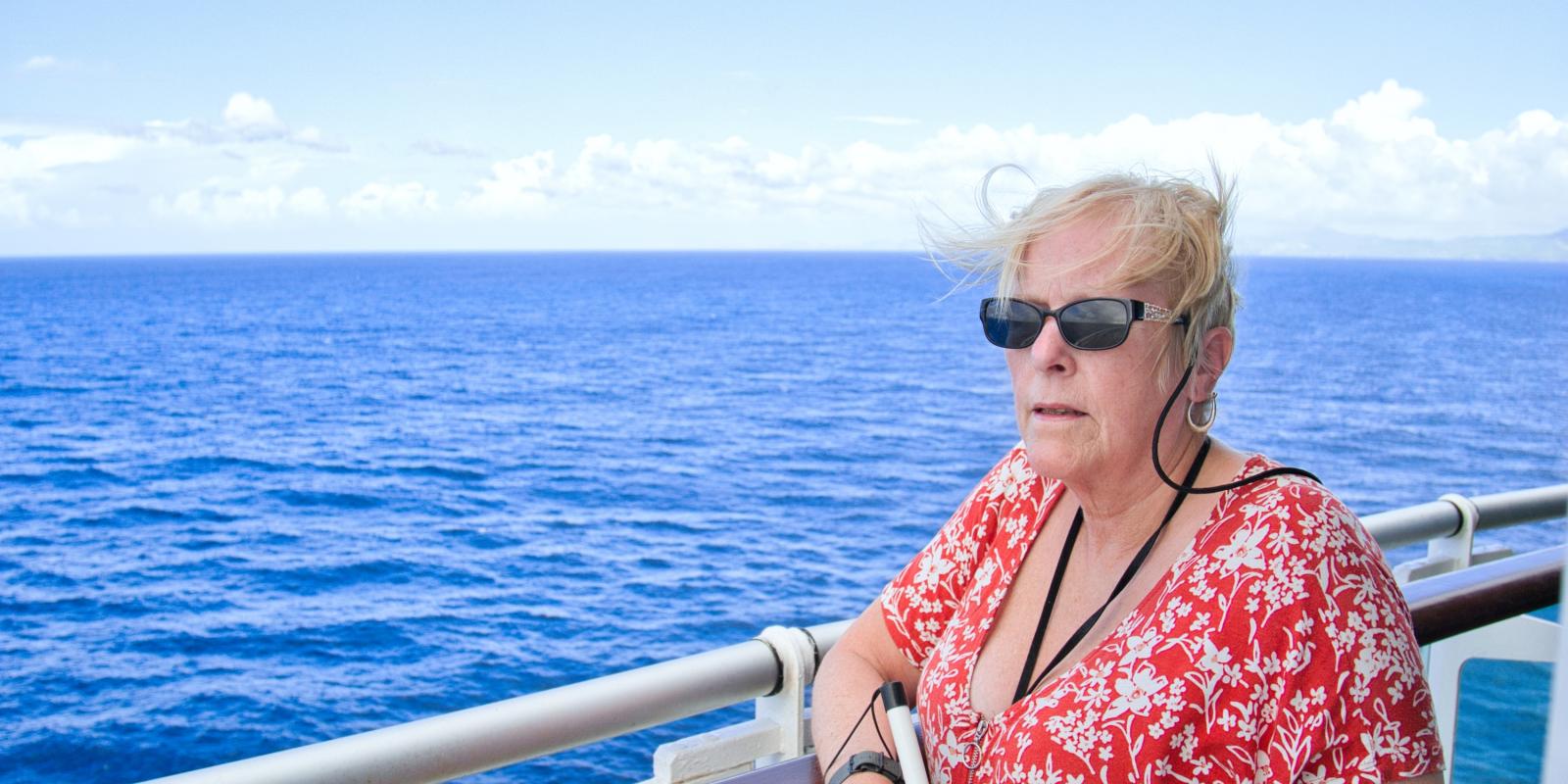Lupe stood in the grocery aisle, frustrated because she could not see the print on the labels to find the ingredients she needed to make her son’s favorite dish. What was the point of life if she was no longer able to contribute to her family’s well-being? Marcus sat in front of the television watching reruns and feeling bored. He would rather be out with his friends, but now that his vision is impaired, he cannot drive to meet them. Although vision rehabilitation services could help Lupe and Marcus, they may have difficulty finding these services.
When someone first begins to have difficulty seeing, the first place they go is to an optometrist or ophthalmologist, who diagnoses and treats their eye condition. But what happens when treatments do not completely restore vision? Most other physical conditions have a medical service available to help restore functioning, sometimes through the use of an adaptive device or strategy. With vision impairment, it’s not that straightforward.
Vision rehabilitation services are somewhat mislabeled. It is not the vision that is rehabilitated but rather the person’s ability to use strategies that accommodate impaired vision. Part of the rehabilitation process is a mental adjustment. While this also can be true for other disabilities, such as the loss of a limb, vision impairment and blindness are recognized as the most feared disabilities and often have a greater mental hurdle to overcome. Ideally, vision rehabilitation services address both the emotional and physical adjustments to vision impairment. To understand why these services are not as accessible through the medical model, we need to take a step back in time.
The Evolution of Vision Rehabilitation Services
A century ago, the main way a person learned to live with vision loss was through a person who had limited vision teaching them the ropes. These peer instructors were known as home teachers because they usually went to the home to provide services. Also available were residential programs, where individuals could stay for months at a time. Later, home teachers were called rehabilitation teachers and training programs for their preparation were established. Some sighted individuals took the training and joined this emerging profession.
‘What happens when treatments do not completely restore vision?’
When the number of newly blinded individuals grew astronomically with blinded veterans returning from World War II, the profession of orientation and mobility was established for instruction in safe travel using a long white cane. As the availability of more technical aids and devices increased, it was hard for rehabilitation teachers to keep abreast of it all. New professional specialties developed to meet the need for instruction with the multitude of technologies available. Low vision therapists and later assistive technology instructors joined the ranks. The title of rehabilitation teacher was changed to vision rehabilitation therapist.
Despite these four specialized professional foci, none of them are firmly connected to the medical model. Instead, these professionals are primarily working for vocational rehabilitation programs, nonprofit agencies for the blind and vision impaired, and blind rehabilitation programs in the Veterans Administration.
Since the year 2000, federally funded programs have been available in each state to serve individuals ages 55 and older who are blind or have a severe vision impairment. Funding for these programs for older individuals who are blind or low vision is given to the vocational rehabilitation agency, which serves individuals with any disability who are looking to obtain or maintain employment. Because specialized professionals work for these agencies and there are relatively few of these professionals, sending the funding to the Vocational Rehabilitation (VR) agency allows the agency potentially to make use of the same professionals to serve both the VR and older blind populations.
‘These programs serve individuals with a wide range of vision impairment.’
The services for older individuals who are blind go by a variety of names and may differ region to region. For instance, many programs include the word “blind” in their title, as in Services for the Blind, Older Blind Services, or Independent Living Older Blind Services. Some programs may also include terms such as visually or vision impaired or low vision in the title. No matter which title is used, these programs serve individuals with a wide range of vision impairment, from mild impairment to total blindness. Programs serve individuals who can still read print, see colors, and even drive. The use of magnification is nearly always part of services, even when the word blind appears in the agency’s name.
In 2002, changes were made so that occupational therapists (OTs) could bill for low vision services. Although low vision services may be provided by an OT, these services are not available everywhere. One difference between OT low vision services and services from vision rehabilitation professionals is that an OT will primarily focus on improved functioning, while vision rehabilitation services often have a dual focus on functional and emotional adjustment.
More information about independent living older blind programs can be found at www.oib-tac.org. Find a broader listing of services at https://www.aph.org/meeting-you-where-you-are.
For more information on The Reality of Aging and Vision Loss in America, Vision Rehabilitation Can Complete the Continuum of Care, Vision Rehabilitation—Help and Hope, Vision Rehabilitation Helps Older Adults Thrive, Shining a Light on Inclusion: Empowering People with Vision Impairment, Vision Rehabilitation Professionals Make the Difference, and The Connection Between Health and Vision Impairment, and How to Meet the Growing Challenge of Older Americans with Vision Loss, read the previous eight articles in this series by VisionServe Alliance.
Kendra Farrow is a Certified Vision Rehabilitation Therapist and the project director for the Older Individuals who are Blind Technical Assistance Center at Mississippi State University, within the National Research and Training Center on Blindness and Low Vision. She is a graduate of Western Michigan University with 14 years’ experience providing itinerant VRT services.
Photo credit: Shutterstock/Quirky Badger













